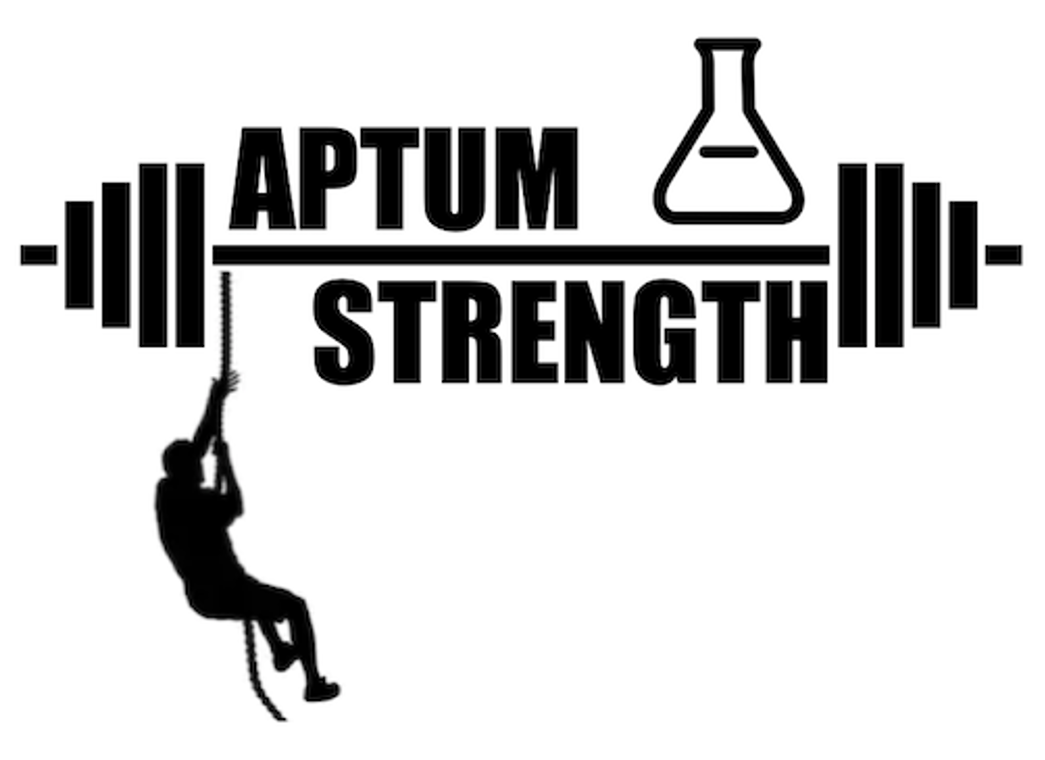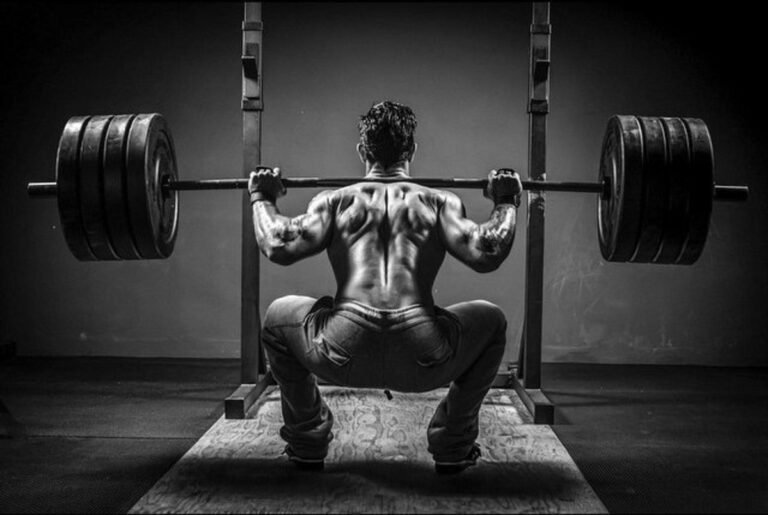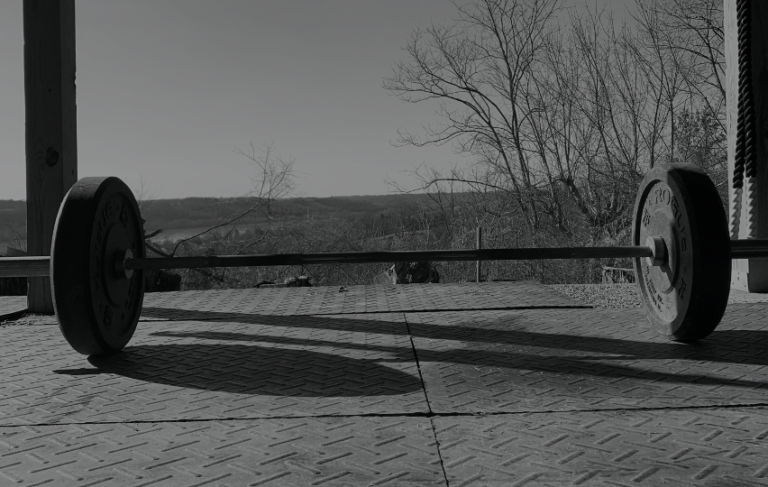Kettlebells are the tool of choice for anyone looking to improve strength, endurance, balance, core stability, and grip, all with one piece of equipment.
The Advantages of Kettlebell Workouts
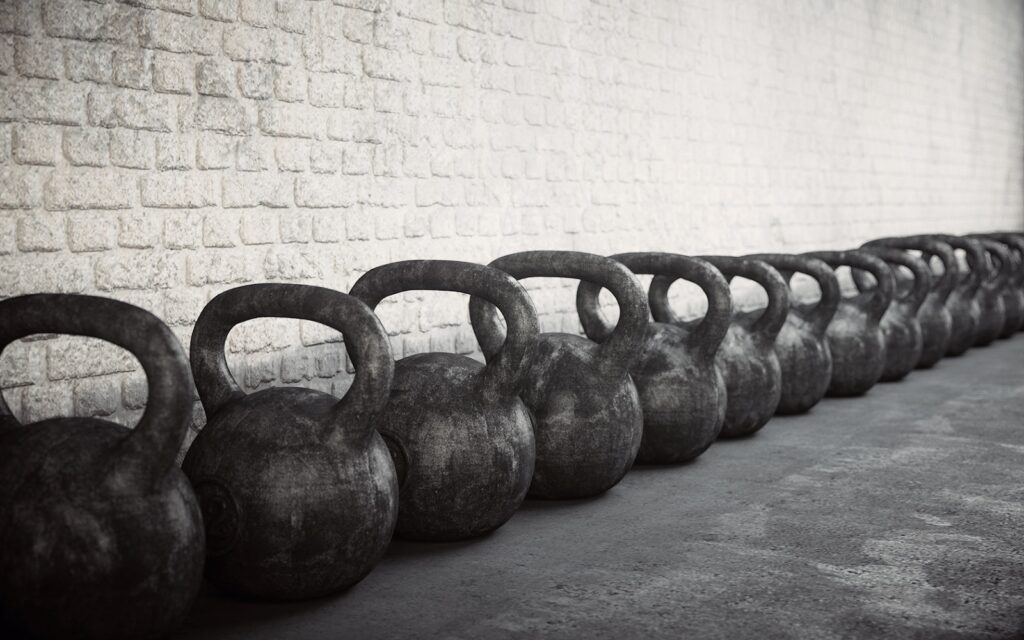
Kettlebells have surged in popularity over the past 15 years, with the internet playing a significant role in their widespread adoption. These workouts offer a plethora of advantages that make them a favorite among fitness enthusiasts. One key advantage is their versatility; with just one piece of equipment, individuals can engage in a wide range of strength and conditioning exercises.
Kettlebells are also known for their ability to enhance coordination, balance, core strength, and grip strength. This versatility has attracted diverse practitioners, including soldiers and jiu jitsu enthusiasts, drawn by the comprehensive benefits these workouts offer.
Another appealing aspect of kettlebell training is its scalability; exercises can be easily adjusted to accommodate various ability levels, making them accessible to beginners and challenging for seasoned athletes alike.
Whether you’re aiming to build strength, improve agility, or enhance overall fitness, a solid kettlebell workout can offer a dynamic and effective solution.
Keys to a Good Kettlebell Routine
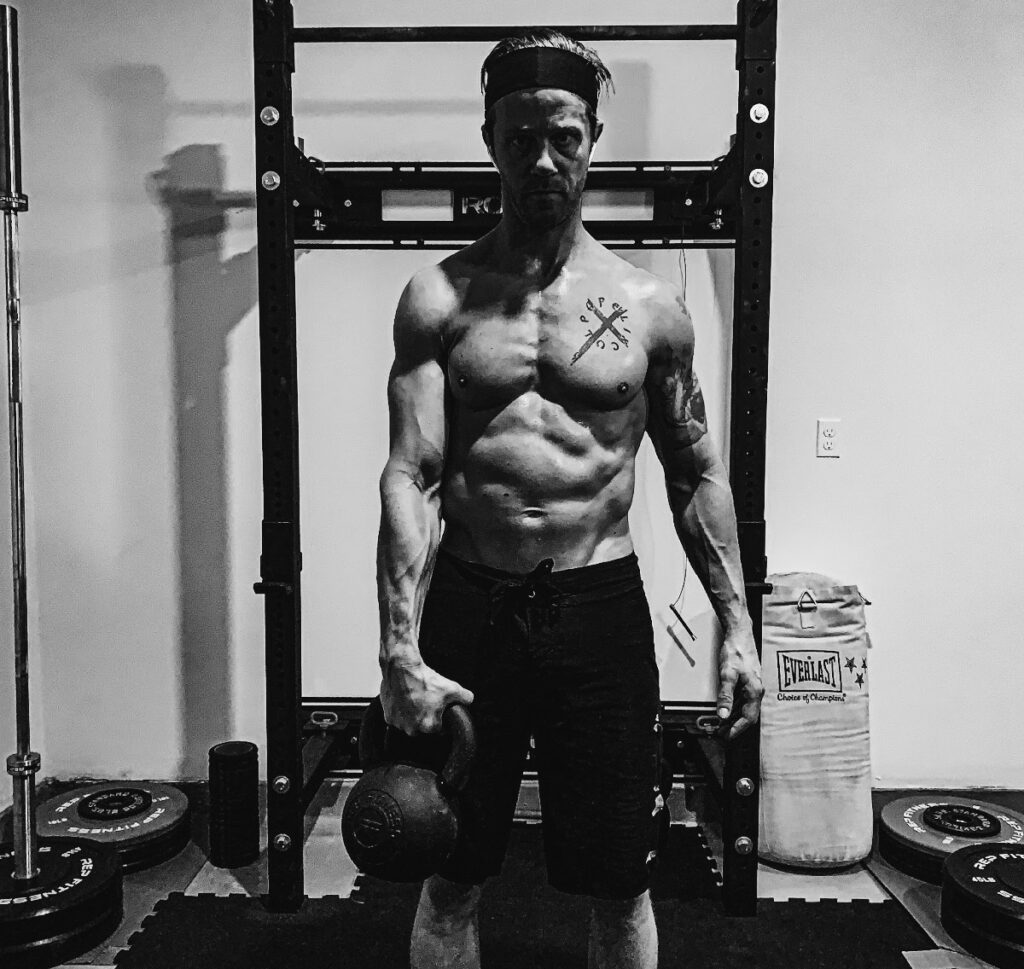
When it comes to effective kettlebell programing, focusing on key principles is essential. While some individuals exclusively utilize kettlebells in their training regimen, achieving success with this versatile tool hinges on several factors.
Firstly, tailoring your workout to align with your specific fitness objectives is important. Emphasizing proper technique over heavy weights initially ensures optimal performance and minimizes the risk of injury. Certain movements, such as kettlebell swings and squats, are comparatively easier to master than others like the clean and jerk. Moreover, integrating diverse modalities into your routine enhances its effectiveness; don’t confine yourself solely to kettlebell exercises.
Whether you’re training at home or on the go, incorporating bodyweight exercises like pushups, pullups, or TRX rows can compliment your use of kettlebells well.
One of the tools I’ve found extremely helpful for enhancing any kettlebell session: a timer. Whether I’m doing a fixed number of reps, every minute on the minute (EMOM), or trying to complete the workouts as fast as possible, a clock is a great tool.
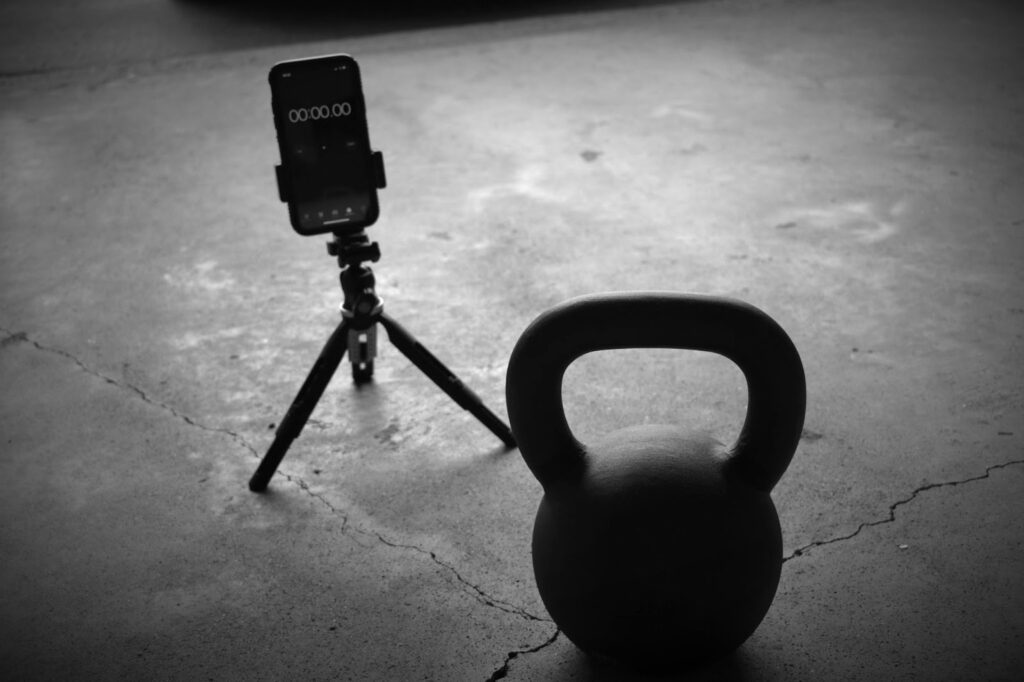
However, it’s crucial never to compromise form, especially given the kettlebell’s unconventional shape, which can predispose individuals to injury if not handled with care. By adhering to these principles, you can maximize the efficacy of your training while mitigating potential risks.
Kettlebell weight for beginners
Having lighter kettlebells helps with a beginner workout and improves form and technique for each exercise. If you have a good workout plan for your workout, the weight will be increased as soon as the workout has started.
Top 7 Kettlebell Exercises for Strength Training
Whether you’re brand new or have been training for years, start with these 7 kettlebell exercises to start your journey.
For strength, focus on fewer reps and heavier weights, and incorporate longer breaks between sets.
For endurance training, focus on lighter weights, less rest between sets, and stacking multiple exercises on top of each other back to back in circuit format.
The following exercises can all be performed with only one kettlebell.
Kettlebell Swing
The Kettlebell Swing is undeniably the quintessential kettlebell exercise, embodying the very essence of what this versatile fitness tool was designed for. Its inclusion in almost every kettlebell workout is no coincidence; it offers a comprehensive full-body workout that targets multiple muscle groups simultaneously.

How to perform the kettlebell swing:
- Feet shoulder width apart, straddling the kettlebell
- Grip the handle with 2 hands
- Allow the kettlebell to travel between your legs
- Thrust your hips forward, propelling the kettlebell to eye level
- Repeat
A Note on Russian vs. American Swings
It’s essential to note the distinction between the two main variations of the kettlebell swing: the American swing and the Russian swing.
While the American swing involves swinging the kettlebell fully overhead until your arms are perpendicular to the ground, the Russian swing stops when the kettlebell reaches chest level.
Many fitness experts advocate for the Russian swing over the American swing due to the reduced risk of shoulder and lower back injuries associated with the former. The American swing places excessive strain on the shoulders and may compromise proper form, increasing the likelihood of injury, particularly for beginners.
By prioritizing safety and proper technique, individuals can derive maximum benefits from the swing while minimizing the risk of injury. Incorporating this foundational exercise into your regular workout routine can enhance strength, power, and cardiovascular endurance, making it an invaluable addition to any fitness regimen.
Whether you’re a seasoned athlete or just beginning your fitness journey, mastering the swing lays a solid foundation for achieving your fitness goals effectively and safely.
Kettlebell Goblet Squat
The Kettlebell Goblet Squat is an excellent exercise for building strength. While this exercise primarily targets muscles of the lower body – quads, hamstrings, and glutes – the challenge of holding the kettlebell in the goblet squat position also works your arms and the muscles of the upper back.
Plus, this exercise can elevate your heart rate as fast as any exercise out there.
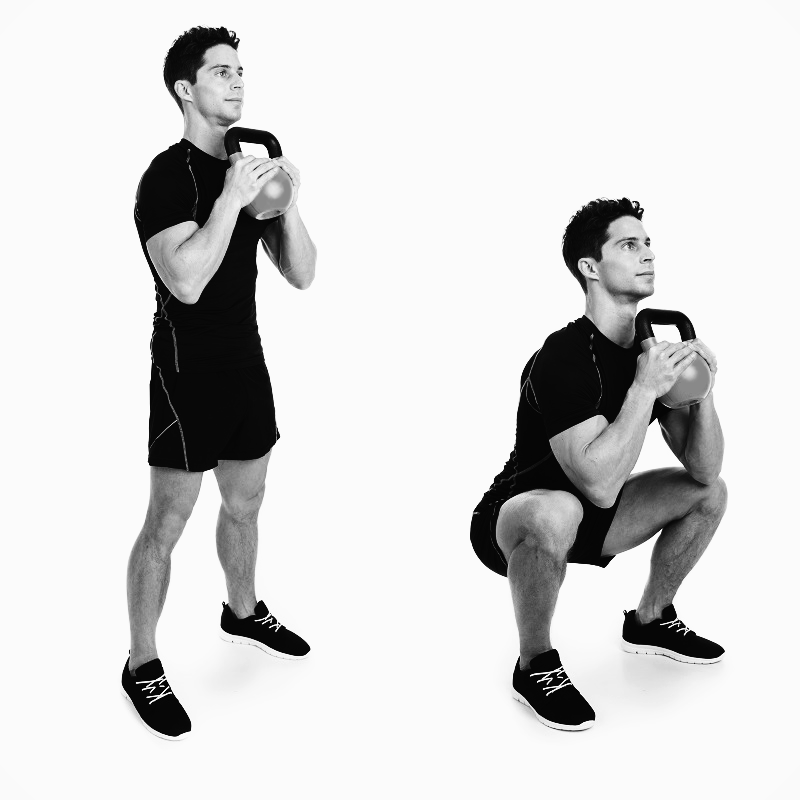
How to do the kettlebell goblet squat:
- Feet slightly wider than shoulder width apart. Toes can be straight ahead or angled slightly outwards
- Grip the kettlebell handle by the outside with each hand
- Lower your hips until they are below your knees, making sure your knees track over your toes
- Drive upwards, pushing evenly through your entire foot (don’t let your weight shift entirely to your toes or heals).
Video Link:
Kettlebell Deadlift
The deadlift is another foundational exercise for strength development, and for with the kettlebell is a perfect tool While primarily targeting the muscles of the posterior chain – including the hamstrings, glutes, and lower back – the engagement required to lift the kettlebell also activates the muscles of the arms and upper back, making it a comprehensive full-body movement.
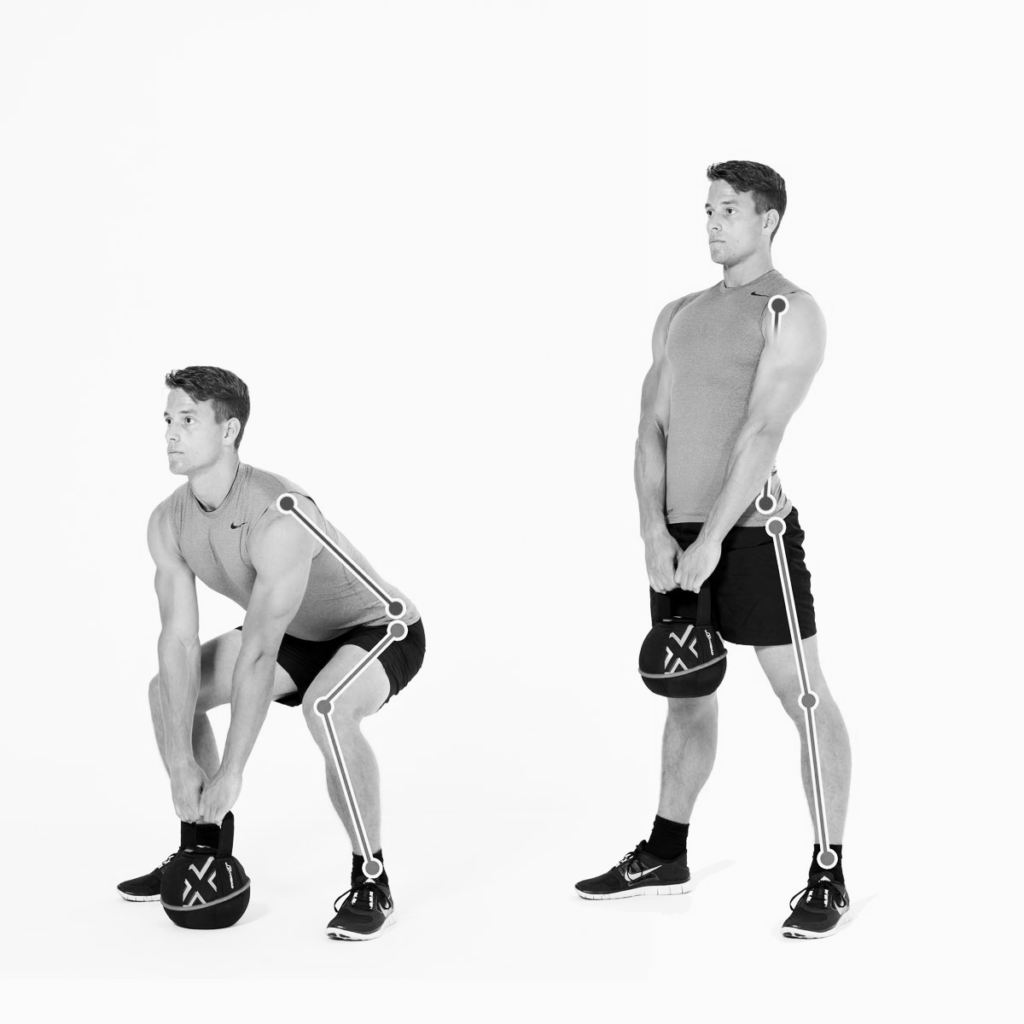
Here’s how to perform the kettlebell deadlift:
- Begin with your feet slightly wider than shoulder-width apart, with toes either pointed straight ahead or angled slightly outward for comfort.
- Grip the kettlebell handle firmly with each hand from the outside.
- Lower your hips by bending at the knees and hips, ensuring your knees track over your toes to maintain proper alignment.
- Keep your back straight and chest up as you hinge at the hips, lowering the kettlebell towards the ground.
- Drive upwards by pushing evenly through your entire foot, ensuring your weight is distributed evenly and not shifted excessively towards your toes or heels.
Mastering the deadlift not only strengthens key muscle groups but also improves overall stability and functional movement patterns.
Check out this video for a visual demonstration:
Kettlebell Row
The Kettlebell Row is a fundamental exercise for developing upper body strength, particularly targeting the muscles of the back, including the latissimus dorsi, rhomboids, and trapezius. While primarily focused on building a strong, muscular back, the kettlebell row also engages the muscles of the arms, including the biceps and forearms, making it a comprehensive upper body exercise.
Additionally, incorporating the kettlebell row into your routine can help elevate your heart rate, providing cardiovascular benefits alongside strength training.

Here’s how to perform the kettlebell row:
- Begin by standing with your feet shoulder-width apart, holding a kettlebell in one hand.
- Hinge at the hips, keeping your back straight and chest up, and lower your torso until it’s nearly parallel to the ground. The arm holding the kettlebell should be fully extended towards the ground.
- Pull the kettlebell towards your hip by retracting your shoulder blade and bending your elbow, keeping it close to your body throughout the movement.
- Squeeze your back muscles at the top of the movement, then lower the kettlebell back down with control.
Complete the desired number of repetitions on one side before switching to the other hand.
Incorporating the kettlebell row into your workout routine can help strengthen key muscle groups in the upper body while improving posture and stability.
Video of kettlebell row:
Kettlebell Overhead Press
The overhead press is a great exercise for developing upper body strength, specifically targeting the muscles of the shoulders, triceps, and upper chest. By pressing the kettlebell overhead, you engage these muscles in a functional movement pattern that mimics real-life activities.
The overhead press also promotes core stability and balance, as you must engage your core muscles to form a stable platform from which to drive the kettlebell overhead.
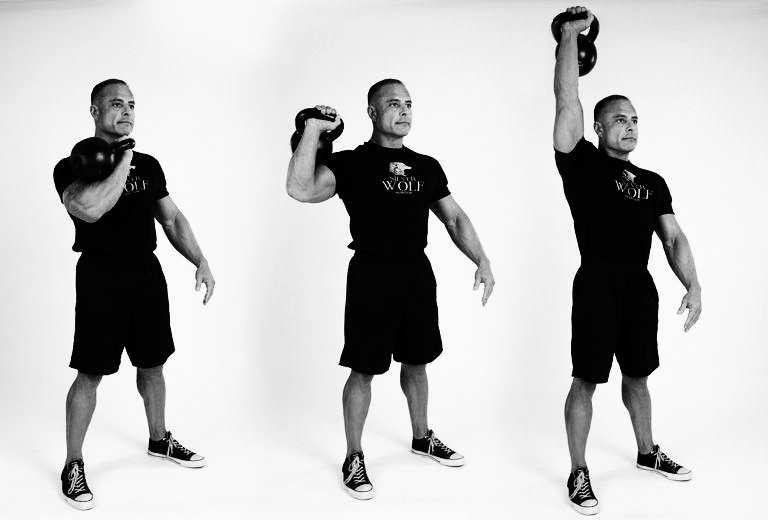
Here’s how to perform the kettlebell overhead press:
- Begin by standing with your feet shoulder-width apart, holding a kettlebell in one hand at shoulder height with your palm facing forward and your elbow bent.
- Brace your core muscles to stabilize your torso and maintain proper alignment throughout the movement.
- Press the kettlebell overhead by extending your elbow and pushing the weight directly upward until your arm is fully extended.
- Keep your wrist aligned with your forearm throughout the movement to ensure proper joint alignment and reduce the risk of injury.
- Lower the kettlebell back down to shoulder height with control, maintaining tension in the shoulder and upper body muscles.
Complete the desired number of repetitions on one side before switching to the other hand.
Incorporating the kettlebell overhead press into your workout routine can help strengthen the muscles of the upper body while improving shoulder stability and mobility.
Kettlebell overhead press video:
Kettlebell Clean
The Kettlebell Clean is a dynamic full-body exercise that targets multiple muscle groups simultaneously, including the legs, hips, core, shoulders, and arms. This compound movement not only builds strength but also improves power, coordination, and explosiveness, making it a valuable addition to any fitness routine.
Performing the kettlebell clean requires proper technique and coordination to ensure safety and effectiveness.
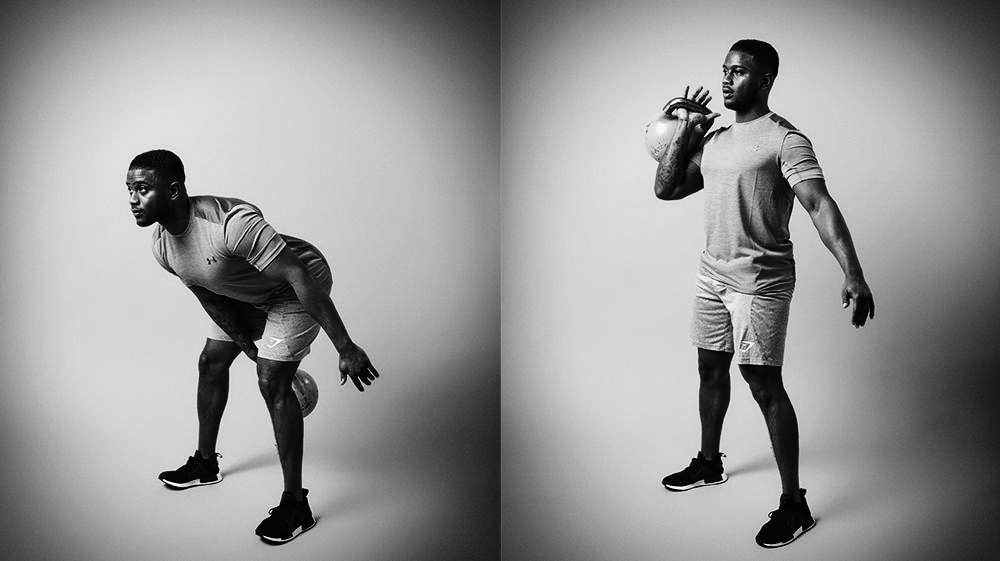
Here’s how to execute the kettlebell clean:
- Begin by standing with your feet shoulder-width apart, with the kettlebell placed on the floor between your feet.
- Hinge at the hips and knees to squat down and grip the kettlebell handle firmly with one hand.
- Engage your core and brace your lower back as you drive through your heels to explosively extend your hips, generating momentum to propel the kettlebell upwards.
- As the kettlebell rises, guide it towards your shoulder by pulling your elbow towards your body and rotating your wrist, allowing the kettlebell to flip over the back of your wrist and land on the back of your forearm.
- Catch the kettlebell at shoulder level with your elbow tucked in and your wrist straight, ensuring a secure and stable position.
- Reverse the movement by lowering the kettlebell back down to the starting position with control, returning it to the floor between your feet.
Repeat the movement for the desired number of repetitions, then switch to the other hand.
Incorporating the kettlebell clean into your workout routine can help enhance functional strength, power, and coordination, while also providing cardiovascular benefits due to its high-intensity nature.
Kettlebell clean video:
Kettlebell Snatch
The Kettlebell Snatch is a dynamic and powerful exercise that targets multiple muscle groups, including the shoulders, back, hips, and core. This high-intensity movement not only builds strength but also improves cardiovascular endurance, coordination, and explosiveness, making it a valuable component of any fitness regimen.
Executing the kettlebell snatch requires precise technique and coordination to ensure safety and effectiveness.
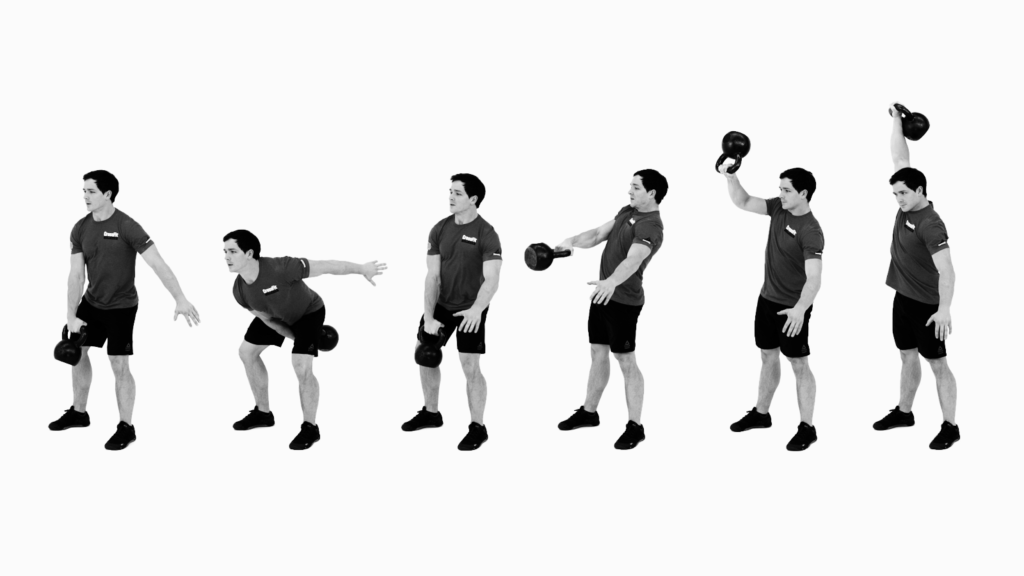
Here’s how to perform the kettlebell snatch:
- Begin by standing with your feet shoulder-width apart, with the kettlebell on the floor between your feet.
- Hinge at the hips and knees to squat down and grip the kettlebell handle firmly with one hand.
- Engage your core and brace your lower back as you drive through your heels to explosively extend your hips, generating momentum to propel the kettlebell upwards.
- As the kettlebell rises, guide it towards the ceiling by extending your arm fully overhead, allowing the kettlebell to flip over the back of your wrist and land in the overhead position.
- Catch the kettlebell at the top of the movement with your arm fully extended overhead, wrist straight, and elbow locked out, ensuring a stable and secure position.
- Reverse the movement by lowering the kettlebell back down to the starting position with control, returning it to the floor between your feet.
Repeat the movement for the desired number of repetitions, then switch to the other hand.
Incorporating the kettlebell snatch into your workout routine can help enhance overall strength, power, and conditioning, while also improving athleticism and coordination. For a visual demonstration, you can watch this video: Kettlebell Snatch Video.
3 Beginner Kettlebell Workouts in 30 minutes or less
Workout 1: Total Body Strength
Perform each exercise for 3 sets of 10-12 reps, resting for 60-90 seconds between sets. Choose a kettlebell weight that challenges you while allowing you to maintain proper form throughout each exercise.
Kettlebell Swing
- Reps: 10-12
- Sets: 3
- Rest: 60-90 seconds
Kettlebell Goblet Squat
- Reps: 10-12
- Sets: 3
- Rest: 60-90 seconds
Kettlebell Deadlift
- Reps: 10-12
- Sets: 3
- Rest: 60-90 seconds
Kettlebell Row
- Reps: 10-12 (each side)
- Sets: 3
- Rest: 60-90 seconds
Kettlebell Overhead Press
- Reps: 10-12 (each side)
- Sets: 3
- Rest: 60-90 seconds
Kettlebell Clean
- Reps: 10-12 (each side)
- Sets: 3
- Rest: 60-90 seconds
Kettlebell Snatch
- Reps: 10-12 (each side)
- Sets: 3
- Rest: 60-90 seconds
Workout 2: Total Body Circuit
This circuit is focused on building a combination of strength and endurance, and will help elevate your heart rate, help you break a sweat, and also give you a decent burn in your muscles.
Move from one exercise to the next without rest, then rest for 90 seconds between rounds. Perform 3-5 rounds, depending on your fitness level.
Goblet Squat: 15 reps
Kettlebell swing: 15 reps
Kettlebell row: 16 reps (8 each arm)
Kettlebell overhead press: 15 reps
Kettlebell deadlift: 15 reps
Rest 90 seconds.
Workout 3: Kettlebell-Body Weight Combo
You don’t have to rely solely on kettlebells for your training. Incorporating bodyweight movements can be a great compliment and allow you to target different muscle groups, different skills, and ultimately, build a better, more comprehensive fitness base.
Combo 1:
Kettlebell Clean: 15 reps
Pushups: 25 reps
Repeat 3x, resting 60 sec between sets
Combo 2:
Kettlebell Snatch: 8 reps each arm
Pull-ups: max reps
Repeat 3x, resting 60 sec between sets
Combo 3:
Kettlebell Row: 10 reps each arm
Kettlebell Deadlift: 20 reps
Repeat 3x, resting 60 sec between sets
How to Get the Most Out of Your Kettlebell Training
How do you get the most out of your kettlebell training?

Firstly, it’s essential to prioritize proper form and technique in every exercise. Kettlebell movements can be dynamic and challenging, so focusing on maintaining correct alignment and engaging the targeted muscles ensures not only effectiveness but also reduces the risk of injury.
Additionally, gradually increasing the weight of your kettlebell as you become stronger and more proficient allows for progressive overload, leading to continued improvements in strength and muscle growth.
Consistency is key in any fitness regimen, and kettlebell training is no exception. Incorporating a kettlebell workout into your routine regularly, whether it’s a few times a week or daily, helps build momentum and allows you to reap the full benefits of this versatile tool. Remember that progress may not always be linear, and there will be days when you may not feel as strong or motivated. However, staying consistent and sticking to your routine, even on challenging days, is crucial for long-term success.
Ultimately, getting the most out of your kettlebell training requires a holistic approach that encompasses proper technique, consistency, variety, and recovery. By prioritizing these elements and staying committed to your fitness journey, you’ll not only build strength and improve your physical fitness but also cultivate a deeper sense of well-being and vitality in your life. So grab your kettlebell, stay focused, and enjoy the journey towards a stronger, healthier you.
